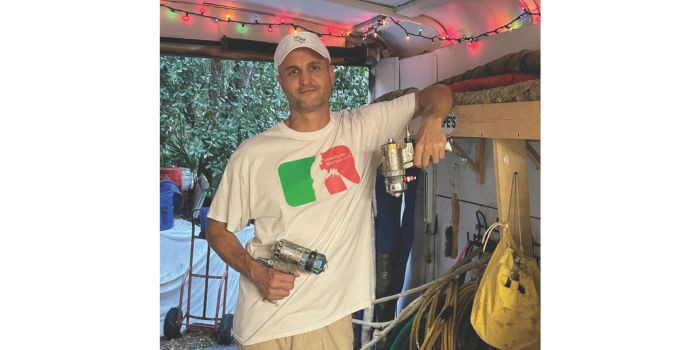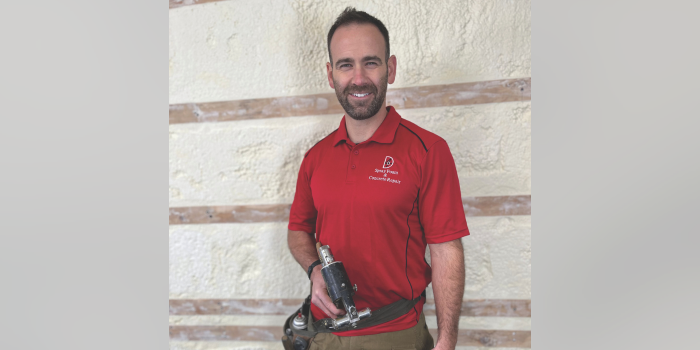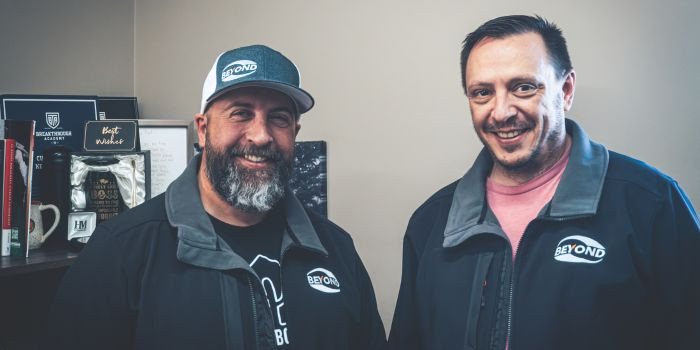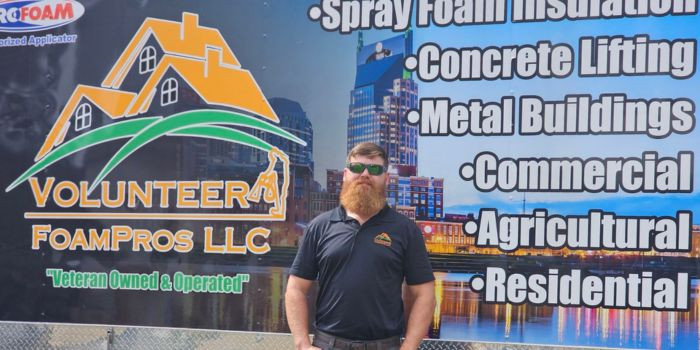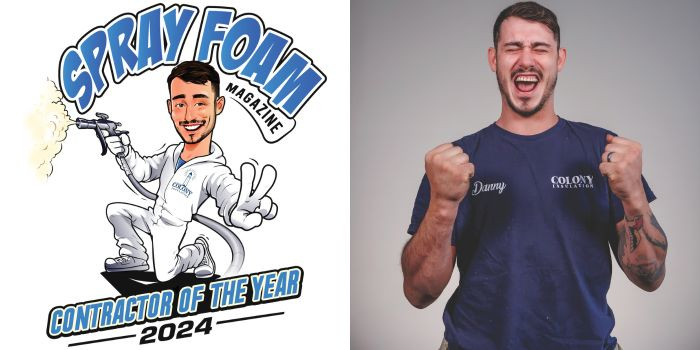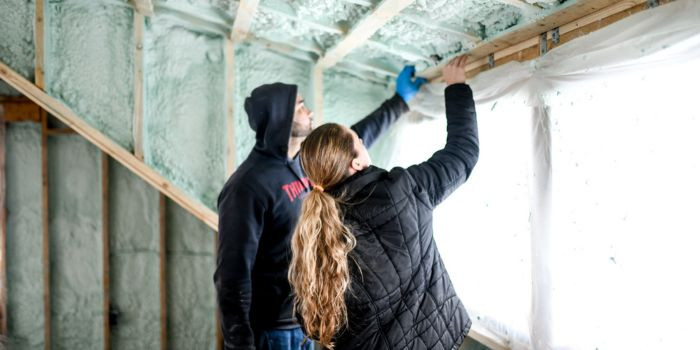Northern (Foamworks) Exposure
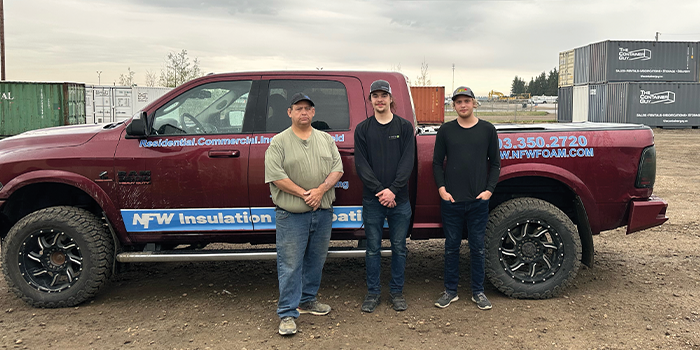

SPRAY FOAM MAGAZINE – You won’t find many fire hydrants lining the streets of Clearwater County, Alberta, which averages only two residents per square mile, so firefighters rely upon large water tanks strategically placed around that rural Canadian community.
Every second counts when battling a fast-moving blaze, so when a fire truck approaches a tank to fill up, the water had better flow freely. That’s no guarantee, especially during the frigid Alberta winters, when temperatures can dip to 40 degrees below zero, potentially freezing the water stored underground in emergency cisterns.
Northern Foamworks Ltd. (NFW) has provided insulation and concrete-lifting services to homeowners, farmers, oilfield companies and commercial customers since 2016. In addition to spray foam, the company sprays industrial coatings and installs traditional fiberglass insulation. Owner Steve Johnson said the company is seeing an increased demand for its SPF services in part because of the freeze-thaw cycles that are common during winters in central Alberta.
Amid harsh winter weather, NFW is using spray foam to give first responders a reliable supply of water in an emergency, making a real difference for local residents. The company, based in Red Deer, Alberta, sprayed three emergency water tanks for Clearwater County in 2023 and expects to spray more this year.
The typical tank measures more than 100 feet in length and holds more than 10,000 gallons. Its bottom half may rest below the frost line, the depth at which the soil freezes in winter, but the top half extends above the frost line, creating the potential for freezing.
To address that risk, the county hired NFW to spray the tops of its tanks with foam, shielding them from extreme temperatures. First, the county dug a hole and lowered the cistern in place. Then, a two- or three-man crew from NFW used a Graco E-30 spray foam proportioner system to cover the tanks.
Equipped with the Boss two-gun system, which allows NFW to spray from two hoses with one machine, workers spray four inches of closed-cell, two-pound foam from Genyk, making steady progress, Johnson said. “That brings our production up,” he said. “We sprayed two sets of foam in about five hours.”
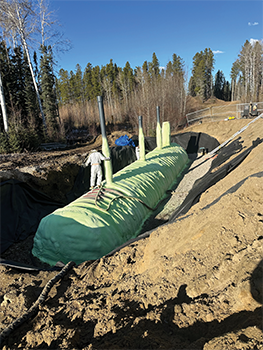
Firewater tank sprayed near Rocky Mountain House in Clearwater County, Alberta
Six Feet Under
Provincial regulators require underground sewer and water services to have a minimum of 1.8 meters, or six feet, of cover, or more if it’s considered necessary based on local conditions to prevent the freezing of services. Where there’s inadequate burial coverage, the service piping must have a protective covering, a frost box, or an equivalent means of insulation, according to Alberta’s regulations.
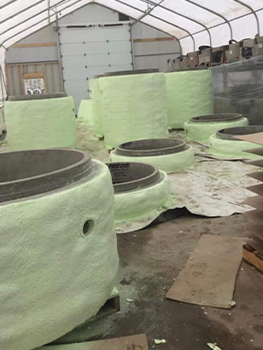
Concrete collection stations sprayed with Genyk Boreal elite at a production facility in Red Deer, Alberta for Fort Chippewan First Nation
The depth of the frost line can vary widely according to local conditions and it’s an important factor when designing foundations, pipelines, and other underground structures. When water in the soil freezes and expands, that leads to frost heaving, an upward swelling of soil that can damage pipes and other underground structures.
Damages also can come from the inside, as water passing through uninsulated pipes freezes and expands, cracking the concrete. Over time, repeated freeze-thaw cycles and shifting soil can weaken concrete pipes and lead to ruptures. Residents may have their water or sewer services interrupted for an extended time, and local communities face costly repairs to infrastructure.
Recognizing the insulative properties of foam, a local precast concrete manufacturer has partnered with NFW on a number of projects, including new and existing water and sewer services.
“They could be doing replacements in the city, or they could be doing a new subdivision,” Johnson said. “A few of the things we’ve sprayed onsite were right beside rivers or streams, where there’s lots of groundwater. Installing SPF eliminates the frost and the freeze-thaw cycles of the concrete. We could be there for four hours or three days, depending on the volume of material we spray.”
In some cases, NFW sprays pipes, tanks, or underground equipment in place, but other projects call for spraying at the factory. During the summer, NFW often sprays in an outdoor laydown area at the factory, but in colder weather, the crew sprays indoors, using plastic to cover the floors and walls to prevent overspray, Johnson said.
Water and sewer pipes buried well below the frost line typically won’t be sprayed, but NFW will be called to spray the manhole connectors, which lead from the manhole cover on the ground down to the pipes. Manhole connectors give workers’ access to the main water and sewer lines, allowing for maintenance, inspection, and cleaning.
Since those pipes extend well above the frost line to the surface, they’re more vulnerable to cracking if left uninsulated. “We might do six tanks in a day, or we might do two large pieces of concrete pipe,” Johnson said. “It just depends.”
On some projects, the manufacturer will wrap the concrete pipe in adhesive butyl tape, a synthetic rubber sealant that provides protection against the elements. NFW then sprays foam to add a superior second layer of insulation, and once it dries, the crew may spray a waterproof coating such as NCFI’s TerraThane for a third layer. By preventing damage to pipes and extending the service life of infrastructure, NFW is helping to improve water service to local residents and to reduce long-term maintenance costs.
For use by SprayFoamMagazine.com & Spray Foam Magazine
Disqus website name not provided.




